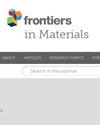3D打印透明对齐器的前景--综述
IF 2.6
4区 材料科学
Q3 MATERIALS SCIENCE, MULTIDISCIPLINARY
引用次数: 0
摘要
透明矫治器疗法是一种发展迅速的正畸治疗方法。三维打印技术可以高精度地创建复杂的几何结构,目前已被应用于牙科领域。本文旨在总结3D打印透明矫治器的各个方面,并对其未来发展进行展望。在介绍传统热成型技术的基础上,介绍了3D打印透明矫治器的原理、应用和材料,以及3D打印透明矫治器的应用前景。根据PRISMA声明,在PubMed、Web of Science、Embase等数据库中检索了3D打印透明对齐器的相关文献。我们在 MESH 数据库中检索了相关词,然后进行了高级检索。我们阅读了系统综述和会议论文,找到了与主题相关的文章,并通过阅读标题和摘要手动添加和排除了文章。透明矫治器的生产结合了计算机辅助三维分析、个性化设计和数字成型技术。三维打印透明矫治器的厚度和边缘可以通过数字控制,从而使矫治器更有效地安装。目前,适合三维打印的透明树脂包括光聚合物甲基丙烯酸酯基透明树脂(Dental LT)(Form Labs, Somerville, Mass)、脂肪族乙烯基酯-聚氨酯聚合物(Tera Harz TC-85)(Graphy, Seoul, South Korea)。它们都具有良好的生物相容性。但目前市场上还没有此类材料获得批准。开发生物相容性树脂并进一步提高材料的机械性能,对于 3D 打印和透明对齐器的结合至关重要。然而,有关3D打印透明矫治器的文献资料非常有限,而且缺乏临床应用。需要进一步进行体内和体外测试,并结合相应的细胞学测试进行更多探索,以研究用于三维打印透明对齐器的可用材料和机械。本文章由计算机程序翻译,如有差异,请以英文原文为准。
Prospects for 3D-printing of clear aligners—a narrative review
Clear aligner therapy is a rapidly developing orthodontic treatment. 3D-printing technology, which enables the creation of complex geometric structures with high precision, has been used in dentistry. This article aims to summarize the various aspects of 3D-printing clear aligners and give an outlook on their future development. The traditional thermoforming technology is introduced and the principle and application of 3D-printed clear aligners and materials are introduced, as well as the application prospects of 3D-printed clear aligners. According to PRISMA statement, the relevant literature of 3D-printing clear aligner was searched in PubMed, Web of Science, Embase and other databases. We searched the related words in the MESH database and then carried out advanced searches. We read systematic review and conference papers to find the articles related to the subject and manually added and excluded articles by reading the title and abstract. The production of clear aligners combines computer-aided 3D analysis, personalized design and digital molding technology. The thickness and edges of the 3D-printed clear aligner can be digitally controlled, which allows appliance more efficiently fitted. Presently, the array of clear resins suitable for 3D-printing include photo polymeric clear methacrylate-based resin (Dental LT) (Form Labs, Somerville, Mass), aliphatic vinyl ester-polyurethane polymer (Tera Harz TC-85) (Graphy, Seoul, South Korea). They all have good biocompatibility. But no such material is currently approved on the market. Developing biocompatible resins and further improving the material’s mechanical properties will be critical for the combination of 3D-printing and clear aligners. However, the literature on 3D-printed clear aligners is limited and lacks clinical application. Further in vivo and in vitro tests, as well as additional exploration in conjunction with corresponding cytological tests, are required for the research on available materials and machinery for 3D-printing clear aligners.
求助全文
通过发布文献求助,成功后即可免费获取论文全文。
去求助
来源期刊

Frontiers in Materials
Materials Science-Materials Science (miscellaneous)
CiteScore
4.80
自引率
6.20%
发文量
749
审稿时长
12 weeks
期刊介绍:
Frontiers in Materials is a high visibility journal publishing rigorously peer-reviewed research across the entire breadth of materials science and engineering. This interdisciplinary open-access journal is at the forefront of disseminating and communicating scientific knowledge and impactful discoveries to researchers across academia and industry, and the public worldwide.
Founded upon a research community driven approach, this Journal provides a balanced and comprehensive offering of Specialty Sections, each of which has a dedicated Editorial Board of leading experts in the respective field.
 求助内容:
求助内容: 应助结果提醒方式:
应助结果提醒方式:


